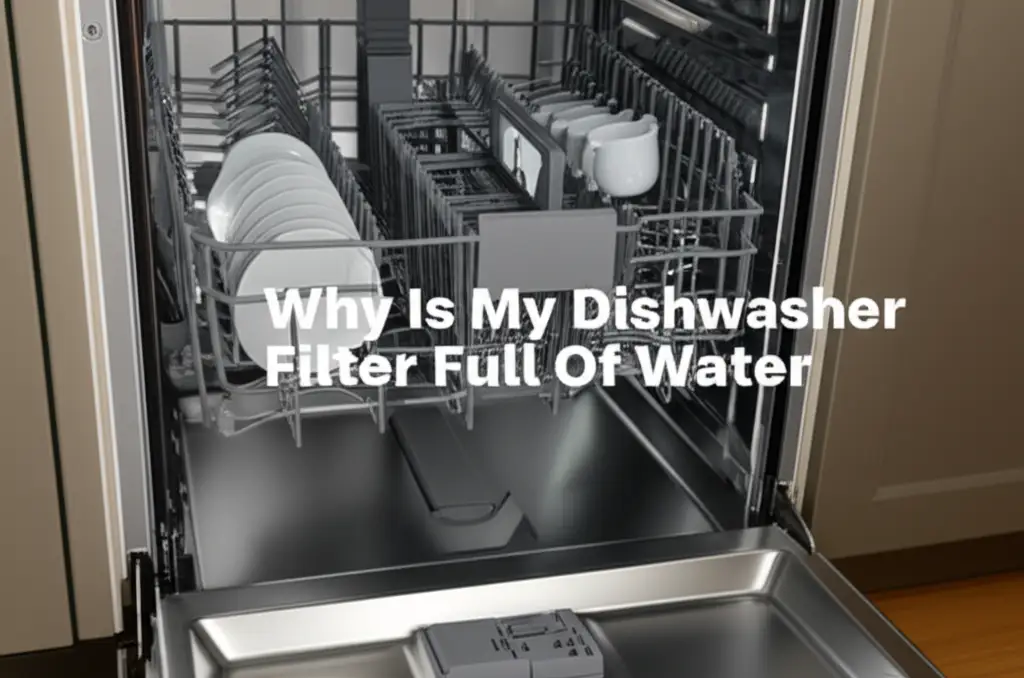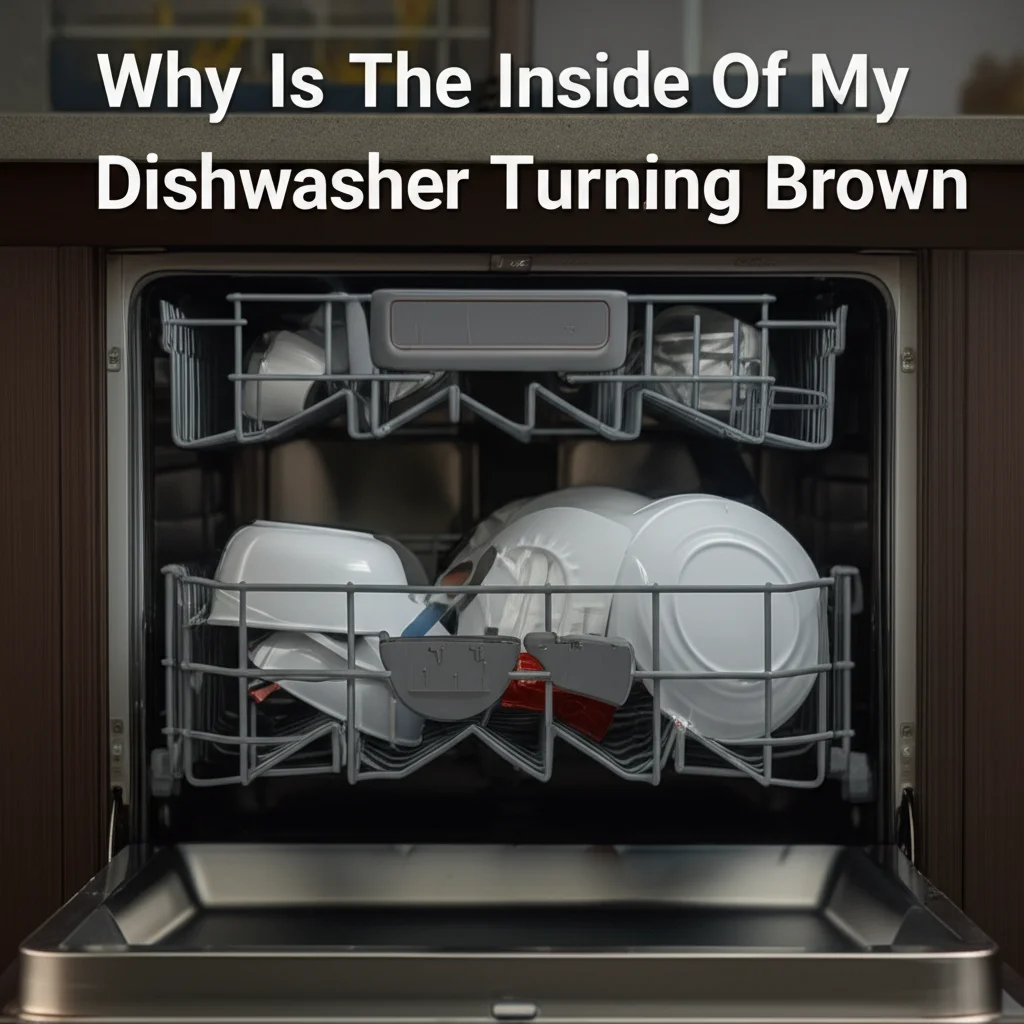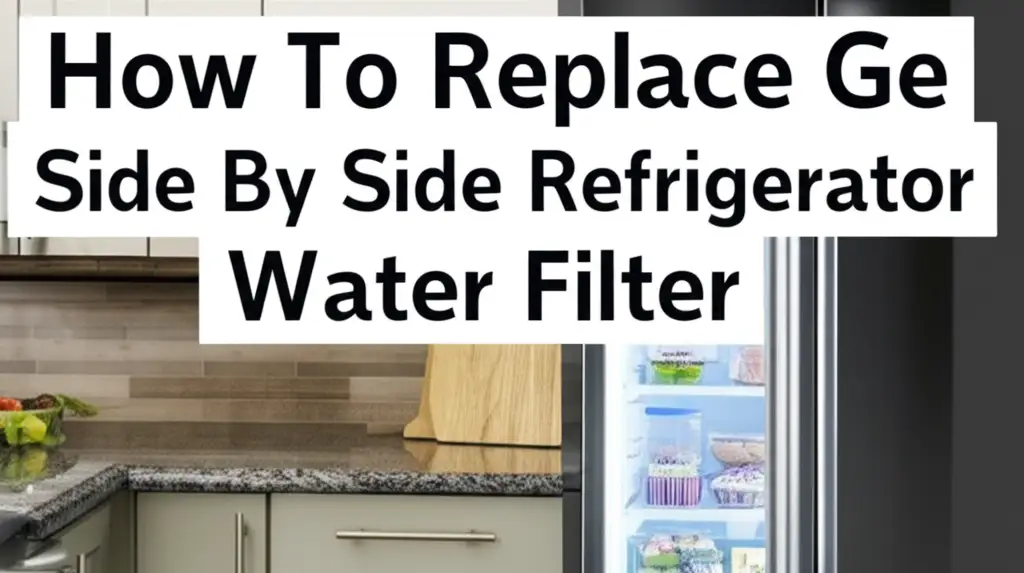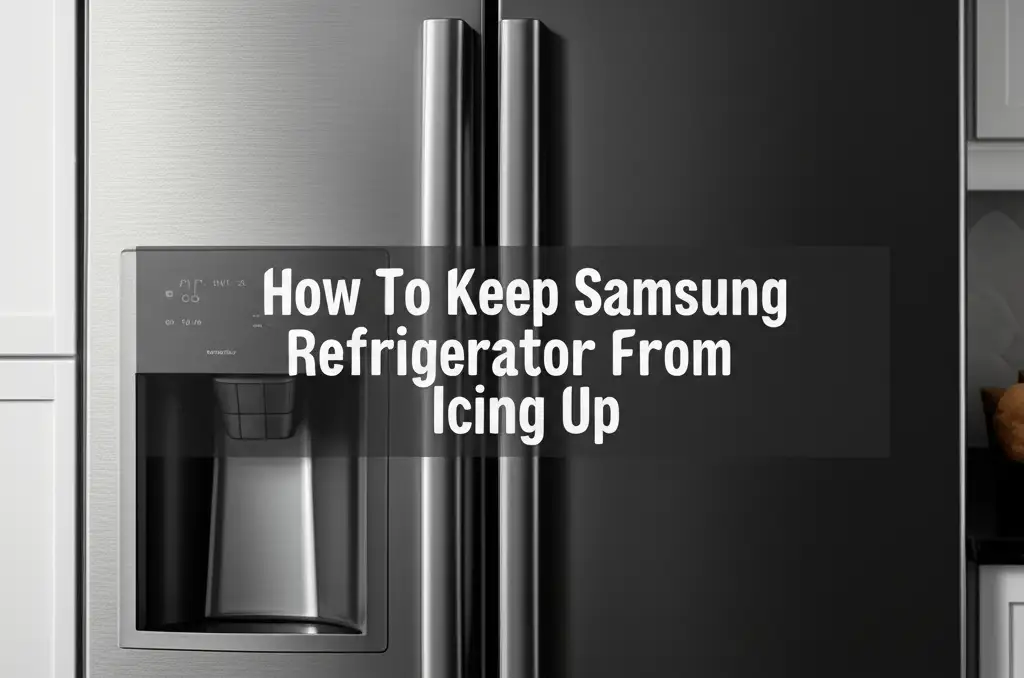· Todd Martin · Appliance Maintenance · 22 min read
How To Empty Rinse Aid Dispenser Kitchenaid Dishwasher
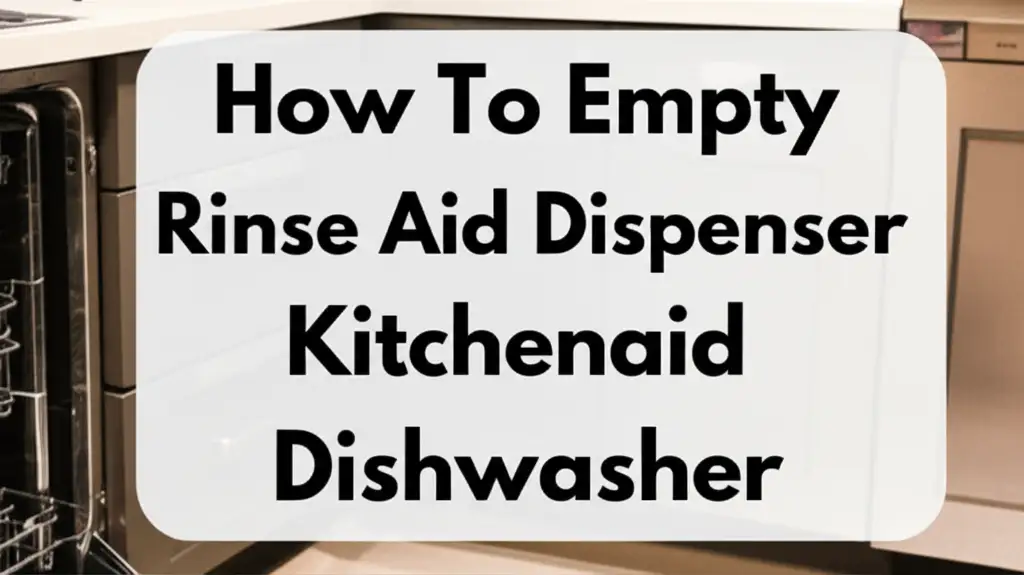
Emptying Your KitchenAid Dishwasher Rinse Aid Dispenser
Dishwashers make daily life easier. A KitchenAid dishwasher is a reliable appliance in many homes. Sometimes, you need to empty the rinse aid dispenser. This task helps maintain your appliance and achieve sparkling clean dishes. I understand the need for clear guidance on this process. This article explains how to empty rinse aid dispenser in your KitchenAid dishwasher. We will cover reasons for emptying, steps involved, and useful tips.
Takeaway
- Identify the rinse aid dispenser location in your KitchenAid dishwasher.
- Use a turkey baster or syringe to extract unwanted rinse aid.
- Blot up any remaining liquid with paper towels or a cloth.
- Clean the dispenser thoroughly after emptying for best results.
- Know when to empty, such as when changing rinse aid type or troubleshooting.
To empty your KitchenAid dishwasher rinse aid dispenser, locate the cap on the inner door panel. Twist the cap to open it. Use a turkey baster, syringe, or absorbent paper towels to carefully remove the liquid. Blot any remaining residue dry. This process helps resolve dispensing issues or switch rinse aid types.
Reasons to Empty Your KitchenAid Dishwasher Rinse Aid Dispenser
You might wonder why anyone would want to empty a rinse aid dispenser. There are several clear reasons to do this. Each reason helps ensure your KitchenAid dishwasher works best. Understanding these points helps you take better care of your appliance.
Sometimes, you might put in the wrong type of rinse aid. Maybe you wanted a specific brand and grabbed another. Or perhaps you used a product not meant for dishwashers. Using the wrong product can lead to poor dish cleaning. It might even damage your dishwasher over time. Removing it quickly prevents these problems.
Another common reason is overfilling the dispenser. It is easy to pour too much rinse aid into the small opening. An overfilled dispenser can cause excess foam during cycles. This foam might spill inside the dishwasher. It can also leave streaks on your dishes. Too much rinse aid wastes the product and affects wash quality.
You might need to clean the dispenser itself. Over time, residue or dried rinse aid can build up. This buildup can clog the dispenser opening. A clogged dispenser will not release rinse aid properly. Your dishes will then come out with spots or cloudy film. Emptying the dispenser allows for a thorough cleaning.
Sometimes, you want to switch to a different rinse aid product. You might be trying a new brand or moving to an eco-friendly option. Mixing different rinse aids is not ideal. It can cause chemical reactions. It might also reduce the effectiveness of the new product. Emptying the old one ensures a clean start.
Troubleshooting performance issues is another reason. If your dishes are still streaky, even with rinse aid, the dispenser might be faulty. Or, if your rinse aid dispenser is not working correctly, emptying it allows for inspection. You can check for clogs or damage. This step is part of diagnosing wash quality problems.
Finally, some people choose to use alternatives like vinegar. If you plan to use vinegar as rinse aid in your dishwasher, you must remove the commercial rinse aid first. Mixing vinegar with traditional rinse aid can create undesirable results. It is important to clear the dispenser completely before making such a switch. These are all valid reasons for emptying the dispenser.
Locating and Accessing the Rinse Aid Dispenser on Your KitchenAid
Finding the rinse aid dispenser on your KitchenAid dishwasher is easy. It is always in a standard location. Knowing where it is helps you quickly access it for filling or emptying. This consistency across models makes maintenance simpler for owners.
The rinse aid dispenser is typically on the inside of the dishwasher door. You will find it near the detergent dispenser. Look for a small, round cap. This cap often has an arrow pointing to an “open” and “close” position. Some caps might have a small indicator window. This window shows the rinse aid level.
To access the dispenser, first open the dishwasher door completely. Look at the inner panel. The dispenser cap usually sits on the top left or right side. It is distinct from the larger detergent cup. The detergent cup usually has a latch or a sliding cover. The rinse aid cap is smaller and twists open.
Once you locate the cap, you need to open it. Most KitchenAid models require you to twist the cap counter-clockwise. You will hear a slight click or feel it loosen. Be gentle when twisting. Do not force it. Some caps might have a small handle or tab for easier gripping.
After twisting, lift the cap off. This action reveals the dispenser reservoir. The reservoir is a small well designed to hold the liquid rinse aid. It might have a small funnel shape inside. This design helps prevent spills during filling. Now the dispenser is open and ready for the next steps.
Before you begin emptying, make sure the dishwasher is empty of dishes. It should also be cool. Do not try to empty it immediately after a hot wash cycle. This prevents any accidental burns from hot water or steam. Having a clear workspace helps the process.
It is important to remember that all KitchenAid dishwashers follow a similar design. Whether your model is new or old, the dispenser location is consistent. This design makes it easy for any KitchenAid owner to perform this task. Accessing the dispenser is the first key step in getting rid of unwanted rinse aid.
Step-by-Step Guide to Safely Emptying the Dispenser
Emptying the rinse aid dispenser in your KitchenAid dishwasher is a straightforward task. It requires simple tools and a careful approach. Following these steps ensures you remove the liquid safely and effectively. I find this process helps maintain machine performance.
First, gather your tools. You will need a turkey baster or a large medical syringe. These tools allow precise liquid removal. You also need paper towels or a clean, absorbent cloth. A small bowl or cup is helpful for collecting the removed rinse aid. Make sure your workspace is clear.
Now, open your KitchenAid dishwasher door fully. Locate the rinse aid dispenser on the inner door panel. As discussed, it is typically a round cap next to the detergent dispenser. Twist the cap counter-clockwise to unlock it. Lift the cap off and set it aside in a safe place.
Next, carefully insert the tip of your turkey baster or syringe into the dispenser reservoir. Be gentle. Avoid pushing too hard or damaging the internal parts. The goal is to reach the liquid at the bottom of the reservoir. Try to keep the baster vertical.
Slowly squeeze the bulb of the turkey baster to create suction. Release the bulb to draw the rinse aid into the baster. If using a syringe, pull back the plunger. Watch as the liquid fills the baster or syringe chamber. Fill it as much as possible without overfilling the tool.
Carefully remove the filled baster or syringe from the dispenser. Empty the collected rinse aid into your designated waste bowl or cup. Repeat this process several times. Continue drawing out the liquid until no more rinse aid is visible in the reservoir. You want to get as much out as you can.
After removing the bulk of the liquid, use paper towels or an absorbent cloth. Fold the paper towel into a small point. Insert it into the dispenser reservoir. Blot up any remaining drops or film. Rotate the towel to absorb all sides of the inner well. This ensures the dispenser is as dry as possible.
Inspect the dispenser opening for any residue or clots. Make sure the small opening at the bottom is clear. This is where the rinse aid dispenses during cycles. If there is any debris, gently wipe it away with a damp cloth. You can also use a cotton swab for tight spaces.
Finally, replace the rinse aid dispenser cap. Align the cap properly and twist it clockwise. You should feel it click into a locked position. This secures the dispenser. Your KitchenAid dishwasher rinse aid dispenser is now empty. This careful process prepares your dishwasher for new rinse aid or alternative solutions.
Dealing with Spills and Overfilling During the Process
Spills can happen when you empty or fill your rinse aid dispenser. Overfilling is a common mistake. Knowing how to handle these situations is important. Proper cleanup prevents issues like excess foam or sticky residue. I always keep some rags handy for this.
If you accidentally spill rinse aid on the dishwasher door or inside the tub, act quickly. Rinse aid is a concentrated liquid. Leaving it to dry can leave a sticky film. It might also attract dust and dirt. Immediate cleanup is essential for good maintenance.
For small spills on the exterior of the dispenser or the inner door panel, grab a clean, damp cloth. Wipe the area thoroughly. Use plain water. Avoid harsh chemicals, as they could react with the rinse aid or damage the plastic. Make sure to wipe until the area feels clean and non-sticky.
If rinse aid spills into the dishwasher tub, it is still important to clean it. Wipe up as much liquid as you can with paper towels. Then, you can run a short rinse cycle. This helps to wash away any remaining residue. Do not use detergent for this rinse cycle. Just plain water is enough.
Overfilling the dispenser is another common scenario. If you poured too much rinse aid, do not panic. Use your turkey baster or syringe to remove the excess. Draw out the liquid until the level is correct. Most dispensers have a “MAX” fill line indicator. Aim for that line.
After removing the excess, wipe down the outside of the dispenser. Excess rinse aid on the outside can lead to drips. These drips might get onto your dishes during a wash cycle. This causes streaks or spots, even if the internal level is right. A clean exterior is just as important.
Sometimes, overfilling can cause rinse aid to leak into the detergent dispenser. If this happens, you must clean both compartments. Rinse aid mixing with detergent can affect cleaning performance. Wipe out the detergent dispenser with a clean, damp cloth. Let it dry completely before adding detergent.
Dealing with spills and overfilling promptly saves you future headaches. It prevents wasted rinse aid and keeps your dishwasher operating efficiently. A clean dispenser area promotes better wash results. It also extends the life of your appliance. Always prioritize a quick and thorough cleanup when these incidents occur.
Cleaning the Dispenser for Optimal Performance
Cleaning the rinse aid dispenser is a vital part of dishwasher maintenance. Over time, residue can build up, hindering its function. A clean dispenser ensures your KitchenAid dishwasher delivers spotless dishes. I always make sure to clean mine thoroughly.
After emptying the dispenser, take a close look inside. You might see a slimy film or dried, crusty residue. This buildup is common, especially if you rarely empty the dispenser. This material can block the tiny opening. The opening releases rinse aid during the wash cycle.
To clean the interior, you can use a small brush. An old toothbrush works well. Dip the brush in warm water. Add a tiny amount of mild dish soap to the water if the residue is stubborn. Gently scrub the inside walls of the reservoir. Pay special attention to the dispensing port.
For the dispensing port, a cotton swab can be very effective. Dip the cotton swab in warm water. Carefully insert it into the small opening. Rotate the swab to dislodge any blockages. Be gentle so you do not damage the valve mechanism. Ensure the opening is clear.
After scrubbing, rinse the dispenser thoroughly. You can do this by pouring a small amount of clean, warm water into the reservoir. Then, immediately remove this water using your turkey baster or syringe. Repeat this rinsing process a few times. This washes away any soap residue or loosened gunk.
It is crucial to remove all cleaning solution from the dispenser. Any soap left behind can cause excessive sudsing during a wash cycle. Excessive suds can lead to wash problems and streaks. Make sure the dispenser is completely clear of suds before proceeding.
Once rinsed, use paper towels or a clean cloth to blot the dispenser dry. Ensure no moisture remains. A dry dispenser helps prevent new residue from forming quickly. It also prepares it for a fresh fill of rinse aid. A dry surface helps the new rinse aid adhere correctly.
Regular cleaning prevents future clogs. It also ensures the correct amount of rinse aid is released with each wash. This leads to clearer, drier dishes. I recommend cleaning the dispenser every few months. This practice helps maintain your KitchenAid dishwasher’s best performance. A clean dispenser means consistently sparkling results.
When to Refill or Adjust Rinse Aid Levels
Knowing when to refill or adjust your rinse aid is key to perfect dishwashing. You do not always need to empty the dispenser completely. Often, just topping it off is enough. However, understanding the right levels ensures your dishes are always sparkling.
Your KitchenAid dishwasher has a rinse aid indicator light. This light is usually on the control panel. It illuminates when the rinse aid level is low. When you see this light, it is time to add more. I always check this light before starting a wash.
When refilling, avoid overfilling the dispenser. Most dispensers have a “MAX” fill line. Fill only up to this line. Overfilling can lead to excessive foam or streaks on dishes. It can also cause rinse aid to leak out during the cycle. This wastes product and creates mess.
Sometimes, you might need to adjust the rinse aid setting. KitchenAid dishwashers usually have adjustable dispense settings. If your dishes come out wet or with water spots, you might need more rinse aid. Increase the setting to a higher level. This releases more rinse aid per cycle.
Conversely, if your dishes have a white film or feel greasy, you might be using too much. This film is often dried rinse aid residue. In this case, decrease the rinse aid setting. A lower setting dispenses less rinse aid. You may also notice your dishwasher uses too much rinse aid if dishes have this film. Find the balance that works for your water hardness.
The frequency of refilling depends on your usage. A family that runs the dishwasher daily will refill more often. A single person might refill every few months. Pay attention to the indicator light. It is your best guide. If the rinse aid light is still on after refilling, there might be a sensor issue. This needs troubleshooting, not more rinse aid.
Consider your water hardness. Hard water often requires more rinse aid for streak-free drying. Soft water might need less. Experiment with the settings to find your ideal balance. Most manufacturers provide guidelines in the user manual. I recommend starting with the default setting. Adjust from there based on your dish results.
Refilling and adjusting rinse aid correctly saves money and improves wash quality. It ensures your KitchenAid dishwasher works as intended. Regular checks and timely refills help keep your dishes perfectly clean and dry every time. This simple step makes a big difference.
Troubleshooting Common Rinse Aid Dispenser Issues
Sometimes, your rinse aid dispenser might not work as expected. Troubleshooting these issues helps get your KitchenAid dishwasher back to peak performance. Many problems have simple solutions. I have encountered a few of these myself.
A common issue is the rinse aid not dispensing. You might see the dispenser full, but your dishes still have spots. First, check if the dispenser cap is securely closed. A loose cap can prevent proper dispensing. Twist it firmly until it clicks.
Next, inspect the dispensing port for clogs. As mentioned, dried rinse aid or residue can block this tiny hole. Use a cotton swab or a small brush to clear any obstructions. Make sure the port is completely free of debris. This is a critical step for proper flow.
If the dispenser appears full but the indicator light stays on, the sensor might be faulty. Some KitchenAid models use a float sensor. If the float is stuck, it will not register the correct level. A gentle tap on the dispenser area might free a stuck float. If it persists, it may need professional attention.
Another problem is the dispenser leaking. If you notice rinse aid seeping out even when not in use, the cap might be damaged. Check the cap for cracks or deformities. The rubber seal around the cap can also wear out. A damaged seal prevents a tight closure. Replacing the cap or seal can fix this leak.
Excessive suds in the dishwasher can sometimes point to a rinse aid issue. This happens if too much rinse aid is dispensed. Adjust the rinse aid setting to a lower level. This reduces the amount released per cycle. Also, ensure you are using dishwasher-specific rinse aid. Other cleaners can cause suds.
If your dishes come out streaky or cloudy, but the dispenser is full, the rinse aid might be old or low quality. Expired rinse aid can lose effectiveness. Try emptying the dispenser completely. Then, refill it with a fresh, reputable brand of rinse aid. This often solves the problem.
For situations where you need to get rinse aid out of the dishwasher due to a major issue, follow the emptying steps carefully. This clears the system for fresh troubleshooting. Running a few empty cycles after cleaning helps flush out any lingering residue.
Always refer to your KitchenAid dishwasher’s user manual for specific troubleshooting tips. It often provides model-specific advice. Most dispenser issues are minor. With a little attention, you can resolve them quickly. Addressing these problems ensures your dishes remain spotless and dry.
Alternatives to Conventional Rinse Aid and Their Implications
Exploring alternatives to traditional rinse aid can be an appealing option. Many people seek more natural or cost-effective solutions. While some alternatives work, it is important to understand their implications for your KitchenAid dishwasher. I have tried a few options.
The most common alternative is white distilled vinegar. Many swear by its ability to combat water spots and improve drying. Vinegar is acidic. This property helps break down mineral deposits from hard water. It leaves dishes sparkling without chemical residue. It is also inexpensive and readily available.
To use white vinegar, you must first empty your conventional rinse aid dispenser completely. As discussed, mixing them is not recommended. Once empty, fill the dispenser with white distilled vinegar. Start with the lowest dispense setting. Adjust up if you still see spots.
While vinegar works for many, it has some limitations. Vinegar is not as effective as commercial rinse aid for all types of water or dish materials. Some users report a slight vinegar smell remaining on dishes. This scent usually fades quickly. It can also be more corrosive over time to certain rubber seals.
Another implication is potential damage to internal dishwasher components. The acidity of vinegar might degrade rubber hoses or seals over extended periods. Most modern dishwashers are built to resist this. However, it is a point of concern for some. I always advise checking your KitchenAid manual. Some manufacturers do not recommend vinegar.
Some people consider using citric acid powder. This is another natural acid. It helps with hard water spots. You would dissolve a small amount of citric acid powder in water. Then, add this solution to the rinse aid dispenser. This option is less common and requires more preparation.
Using no rinse aid at all is also an option for some. Modern dishwashers and high-quality detergents can sometimes provide decent results without rinse aid. This depends heavily on your water hardness and dishwasher model. You might notice more water spots or less efficient drying.
If you choose not to use rinse aid, be aware that drying performance may decrease. Dishes might stay wet longer. This can lead to increased energy use if you rely on heated drying cycles. Air drying might be your best option in this case. You also risk more water spots on glassware. Running your LG dishwasher without rinse aid might result in similar outcomes.
Always test alternatives carefully. Observe your dishwashing results closely. If you see negative effects, switch back to a commercial rinse aid. Protecting your KitchenAid dishwasher is important. Choose the option that best balances performance, cost, and safety for your appliance. Can vinegar be used as rinse aid in dishwasher is a common question, and yes, with considerations.
Maintaining Your KitchenAid Dishwasher for Long-Term Performance
Proper maintenance extends the life of your KitchenAid dishwasher. It ensures efficient operation and consistently clean dishes. Beyond just the rinse aid dispenser, several other areas need your attention. Regular care saves money and prevents costly repairs.
Start with regular filter cleaning. Most KitchenAid dishwashers have a removable filter at the bottom. Food particles and grease collect here. A clogged filter severely impacts cleaning performance. Remove and rinse the filter under running water after every few washes. Some filters require scrubbing with a brush and soap. This step is easy but often overlooked.
Next, inspect the spray arms. These are the spinning arms with small holes that spray water onto your dishes. Over time, mineral deposits or food bits can clog these holes. Use a toothpick or small wire to clear any blockages. Ensure the arms spin freely. Blocked holes mean uneven water distribution.
Clean the interior of the dishwasher regularly. Food residue and hard water stains can build up on the tub walls and racks. Run an empty cycle with a dishwasher cleaner once a month. You can also use white vinegar or baking soda for a natural clean. This helps remove odors and keeps the interior fresh.
Check the door seal or gasket. This rubber seal prevents water from leaking out. Food debris or mold can accumulate here. Wipe it down with a damp cloth. Look for cracks or tears in the seal. A damaged seal needs replacement to prevent leaks. Clean door seals also help maintain proper temperature inside the dishwasher.
Descale your dishwasher periodically, especially if you have hard water. Mineral buildup affects heating elements and pump performance. Use a dishwasher descaler product following package directions. This helps remove limescale. Regular descaling improves energy efficiency.
Ensure proper loading of dishes. Do not overload the dishwasher. Proper spacing allows water and detergent to reach all surfaces. Overloading can block spray arms. It can also prevent rinse aid from reaching all dishes. This leads to poor cleaning and drying results.
Use the correct amount of detergent. Too much can cause excess suds. Too little means dirty dishes. Follow the detergent manufacturer’s recommendations. Adjust based on your water hardness and how dirty your dishes are. High-quality detergent works best.
These maintenance steps ensure your KitchenAid dishwasher remains a reliable appliance. They complement the proper care of the rinse aid dispenser. A well-maintained dishwasher delivers exceptional cleaning performance year after year.
FAQ Section
Q1: What happens if I don’t empty the rinse aid dispenser?
A1: If you do not empty it, old or wrong rinse aid can cause issues. You might see streaks or spots on dishes. The dispenser might also clog over time. This leads to poor drying. Overfilling can create excessive foam, which can spill.
Q2: Can I just let the old rinse aid run out?
A2: Yes, you can. However, if the rinse aid is expired, the wrong type, or overfilled, issues might persist. For best results or to switch products, emptying it is better. Letting it run out may mean several cycles with poor results.
Q3: What tools do I need to empty the dispenser?
A3: You will need a turkey baster or a large medical syringe. These tools help extract the liquid precisely. You also need paper towels or a clean cloth to blot up residue. A small bowl to collect the removed rinse aid is also helpful.
Q4: How often should I empty my KitchenAid rinse aid dispenser?
A4: You do not need to empty it often. Only empty it when you need to switch rinse aid types. Empty it if you overfill it. Also, empty it if you suspect a problem like old or faulty rinse aid. Regular cleaning is more about wiping it down than full emptying.
Q5: Will emptying the dispenser fix my streaky dishes?
A5: Emptying can help fix streaky dishes. If the streaks are from old or too much rinse aid, then yes. After emptying, clean the dispenser, and refill it properly. Adjusting the dispense setting or using fresh rinse aid also helps with streaks.
Q6: Can I use a towel instead of a baster to empty it?
A6: Using a towel is less effective for bulk removal. It can soak up residual liquid. For best results, use a turkey baster or syringe first. Then, use paper towels to blot any remaining drops. This ensures a more thorough emptying.
Conclusion
Taking care of your KitchenAid dishwasher, especially its rinse aid dispenser, ensures sparkling clean dishes. Emptying the rinse aid dispenser might seem like a small task. However, it plays a big role in maintaining your appliance. We have covered reasons to empty it, like overfilling or switching products. We also explored the simple steps to safely remove rinse aid. This includes locating the dispenser and using basic tools.
Remember to handle spills promptly and clean the dispenser thoroughly. This prevents future problems. Knowing when to refill or adjust rinse aid levels helps optimize performance. Troubleshooting common issues ensures your dishwasher works efficiently. Consider alternatives like vinegar, understanding their pros and cons. My hope is this guide helps you keep your KitchenAid dishwasher running perfectly. By following these tips, you will enjoy spotless dishes for years to come.


